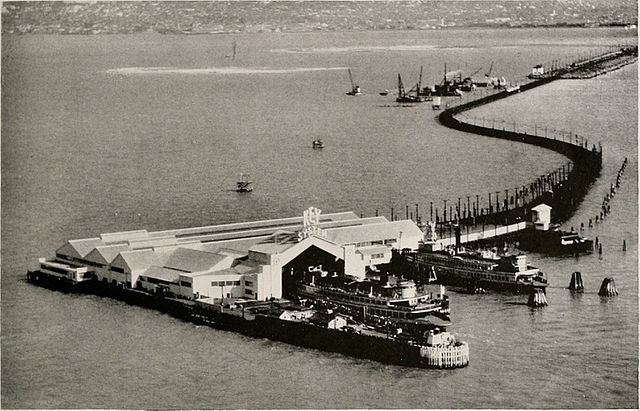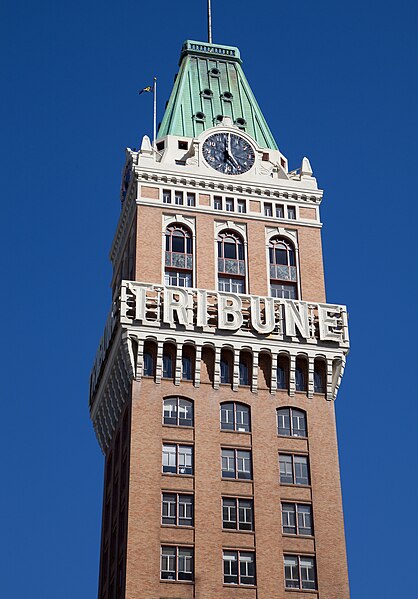The Key System was a privately owned company that provided mass transit in the cities of Oakland, Berkeley, Alameda, Emeryville, Piedmont, San Leandro, Richmond, Albany, and El Cerrito in the eastern San Francisco Bay Area from 1903 until 1960, when it was sold to a newly formed public agency, AC Transit. The Key System consisted of local streetcar and bus lines in the East Bay, and commuter rail and bus lines connecting the East Bay to San Francisco by a ferry pier on San Francisco Bay, later via the lower deck of the Bay Bridge. At its height during the 1940s, the Key System had over 66 miles (106 km) of track. The local streetcars were discontinued in 1948 and the commuter trains to San Francisco were discontinued in 1958. The Key System's territory is today served by BART and AC Transit bus service.
Key Pier, 1909
A Key System train in Emeryville, 1909, heading west to the Mole, entering the underpass ("subway") under the mainline of the Southern Pacific under construction.
The new ferry terminal on the Key System Mole in 1933. The old ferry terminal and the end of the mole had been destroyed by a fire and explosion earlier in the year.
Key System car #187 preserved at Western Railway Museum.
Oakland is the most populous city in and the county seat of Alameda County, California, United States. A major West Coast port, Oakland is the largest city in the East Bay region of the San Francisco Bay Area, and the third-largest city overall in the Bay Area. With a population of 440,646 in 2020, it serves as the Bay Area's trade center: the Port of Oakland is the busiest port in Northern California, and the fifth- or sixth-busiest in the United States. A charter city, Oakland was incorporated on May 4, 1852, in the wake of the state's increasing population due to the California gold rush.
Image: OAKLAND, CA, USA Skyline and Bridge (cropped)
Image: Alameda County Superior Court (cropped)
Image: Fox Oakland Theatre
Image: Downtown Oakland Historic District 6 (cropped)








